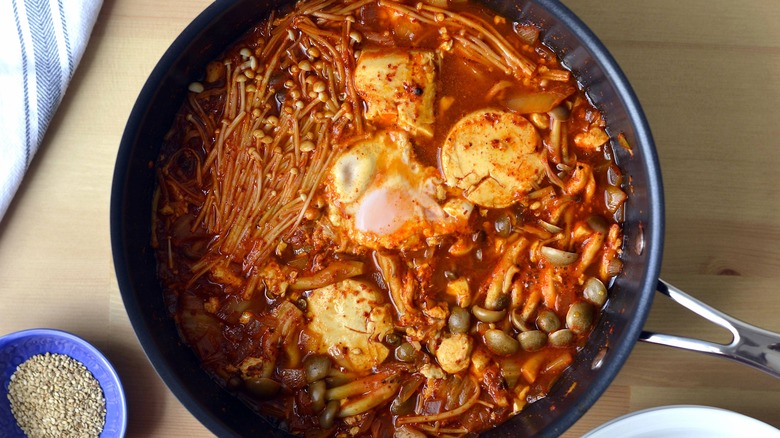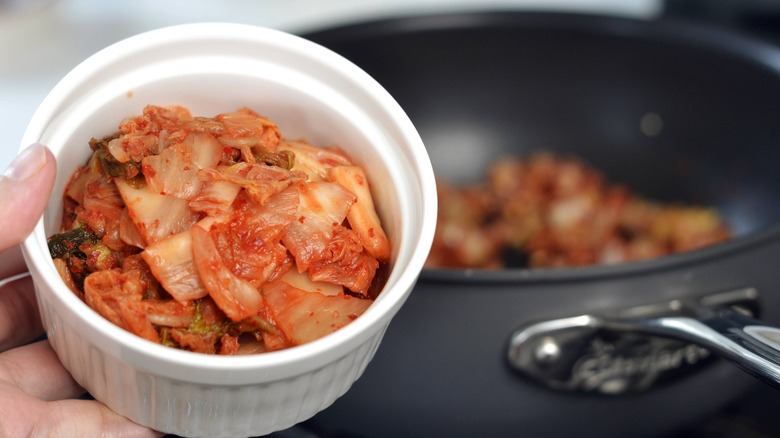Easily Add Veggies And Some Spice To Your Stew With Kimchi
The wonder of Korean cuisine is never-ending, but if there's anything that can fully encapsulate its essence, it'd probably be kimchi — a uniquely enticing yet endlessly versatile staple. Although a bit funky upon first impression, this gem's tangy, spicy taste and sharp acidity are a trusted companion to so many dishes. Rich in both taste and texture, it often doubles as a topping and a seasoning. Most commonly, you can find it in various stews offering intense flavors, laced with a beautifully hearty warmth. More than that, kimchi also induces a spiciness that deepens the overall flavor profile and gives it an intriguing complexity. Depending on the amount that you use, the dish's spice level can range anywhere from a subtle kick of heat to a fiery, tongue-tingling goodness.
Since kimchi is basically fermented vegetables — most often a mix of cabbages, radishes, and carrots — adding more to your stews is an incredibly simple way to make the dish much more substantial and nutritious while also diversifying the texture with chewy and tender crisp bites. Alongside sturdier veggies, like cubes of potatoes and squash, its contrasting presence is an unexpectedly nice twist that no doubt enhances the eating experience.
A kimchi stew, what could be better?
Korean cuisine has a special kimchi stew called kimchi-jigae, and Tasting Table recipe developer Rika Hoffman has their own version. Made from anchovies and kelp, the broth is deeply savory and umami. It later takes on an intensity with the flavoring of kimchi and other condiments such as hot pepper flakes, gochujang, soy sauce, etc. The toppings often include tofu, Korean radish, mushrooms, and pork belly with some scallions and sesame seeds for garnish.
That said, you can add kimchi to various other types of stews as well. Even when it's not the main ingredient, kimchi still has its own stunning way of shining and elevating the dish. Another amazing Korean stew that fares marvelously with kimchi is kongbiji jjigae — a creamy stew with a soybean base. Adding kimchi gives it a contrasting vibrancy that cuts right through all that deep umami richness. Other bean stews such as white beans, kidney beans, and black beans would also work. Playing into the tangy, hearty flavor profile, a tomato stew could benefit greatly from having kimchi and its tangy, spicy notes in the mix.
For those who can't seem to get enough of spicy food, consider combining kimchi with another beloved spicy food–curry. As all the fragrant, complex ingredients come together in one steamy hot pot, it's not just your taste buds that will get a treat. You'll adore the gorgeous scent pervading the kitchen as well.

